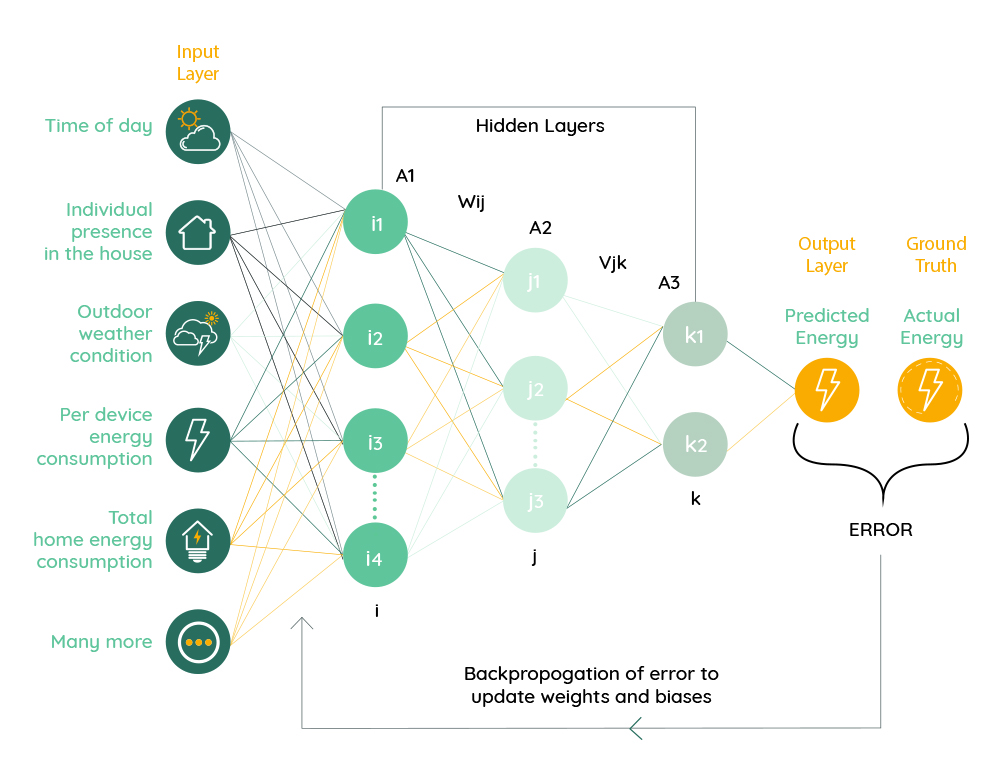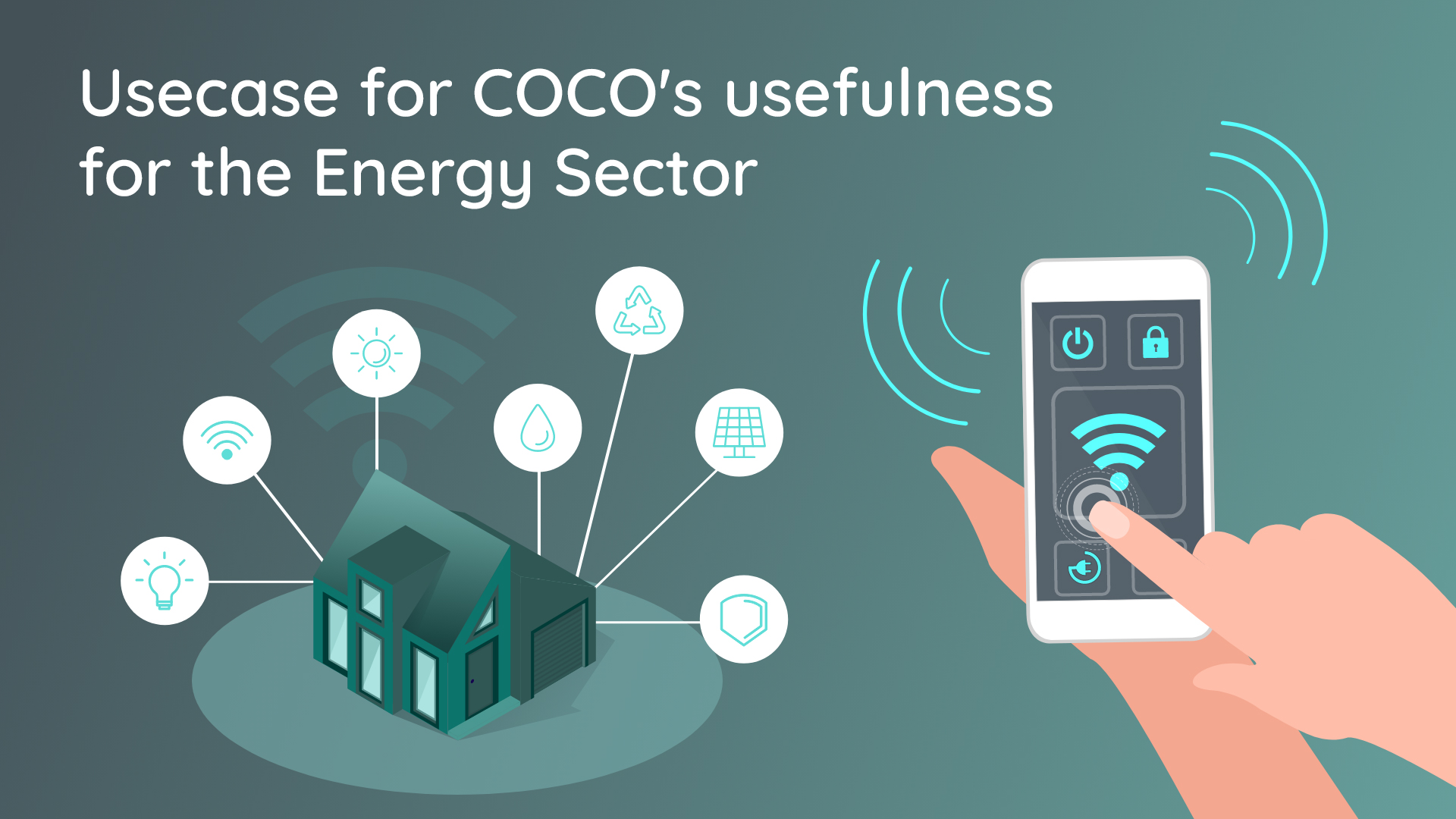Usecase for COCO’s usefulness for the Energy Sector
A seamless customer experience has now become a differentiator for energy providers. Additionally, customers demand convenience, savings, greater control, and simplicity; precisely the kind of experiences they enjoy in their retail dealings. In response to new customer demands, the road ahead will require utility companies to integrate devices and services onto a unified smart platform to deliver personalized and data-driven connected experiences.
Apart from developing products that are designed to offer customers an enhanced experience, utility companies are embracing Artificial Intelligence (AI), Automation, Analytics, and the Internet of Things (IoT) to stay competitive in a disruptive landscape.
Here are some use cases that could be explored by energy providers in the IoT and Smart Home space.
IoT & Smart home use cases for energy consumers and service providers
1.Smart Energy Meter
Smart energy meters are already popular among consumer markets for improving energy efficiency and streamlining energy consumption. But, a smart energy meter buzzed on COCO using the device SDK can interoperate with other smart devices in the smart home. And, it can be an interface to various device functions like Enable/Disable meter, Report meter data, and Firmware OTA. There is no need to write any backend cloud code, simply one API call will report the meter data to the App.
2. Smart Energy Meter App
A smart energy meter app created using COCO’s client SDK can interoperate with other devices in a house. This could be your own or an app that is already available on COCO Grove that is available for your customers to download. This gives customers control over their energy usage by enabling the monthly monitoring of energy, providing digital billing services, and real-time outage alerts.
Setting up static rules around disabling certain appliances if the meter is above thresholds requires no additional code. It is handled by the platform and the companion COCO App that is available for white label.
3. AI-based home energy management (HEM) app: Remote asset management and monitoring
AI-based home energy management application learns personal preferences and recommends actions to save consumer bills. While this enhances customer experience, such apps provide new avenues of recurring revenues for the utility or energy provider.
Create a simple Fully Connected Neural Network with 3 hidden layers. Add an input
layer of all the indicators that can help predict energy consumption from the real-time
streaming attribute data that is coming in from the SDK. Additionally, the ground truth data is also available in the form of real-time streaming instantaneous aggregated energy consumption from the Smart Meter.

To maintain consumer data privacy, such algorithms can also be pushed onto Device hardware, rather than utilizing cloud computing.
Connected sensors can be utilised to calculate vibration, wear, tear, temperature and other parameters to discover the overall health of assets from turbines to transmission lines. Movements in the data acquired from sensors could be used to calculate the “time to failure” of key infrastructures and plan maintenance. This minimizes downtime, reducing the adverse economic outcomes of such downtimes.
4. End-to-End Grid Management with feedback loops
With single-brand product lines launching smart devices, and the existence of multiple communication protocols, creating a connected experience is not seamless. It is not just about getting devices to talk to each other, but also about sharing data.
For an energy provider, remaining brand-agnostic is now a reality. The COCO Edge AI-enabled Smart Home platform lets you deliver connected experiences effortlessly. COCO enables third-party device makers from all consumption points in the smart home to provide data over the open COCO standards utilized by the middleware.
It aids your market intelligence team to innovate optimal product and service bundles. IoT’s ability to provide the real-time information needed to effectively manage congestion on T&D lines; ensure the grid of connected generation stations have met the connection requirements from frequency to voltage control to prevent instability.
5. Appliance Service management
Energy Optimizer sold by your brand combined with the Smart Meter gathers data from different smart devices, across several parameters. Heating, ventilation, and cooling systems (HVAC) are prone to wear and tear which need constant maintenance.
The energy data received from either a commercial or residential air-conditioner can reveal unusual levels of wear and tear. Such integrated schemes will automate the entire system of appliance maintenance. It can be used for regular, annual maintenance check-ups, alerting the service partner and the consumer about anomalies, and notifying providers about SLAs and payments.
Energy providers can also provide basic B2B services without giving private consumer data and maintaining anonymity.
6. Other integrated energy management use cases
COCO’s end-to-end IoT platform can be used for additional use cases that depend on real-time communication.
Leverage the IoT platform for other adjacent market B2B avenues beyond the Smart Home.
Benefits of a Smart Home Platform to Energy Service Providers
The ideal utility smart home platform ensures rapid new product introductions, adds recurring revenue streams, aggregates connected experiences, brings a double-sided platform which can be extended to B2B use cases too.
Access a full list of benefits and use cases available for energy providers with a smart home platform.
Download whitepaper: Benefits of a Smart Home Platform to Energy Service Providers





Comments :
Leave a comment